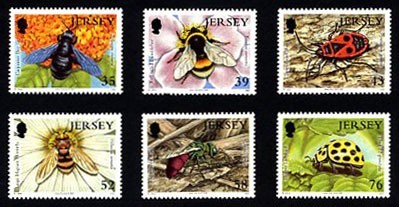Despite widespread concern about declines in pollination services, little is known about the patterns of change in most pollinator assemblages. By studying bee and hoverfly assemblages in Britain and the Netherlands, we found evidence of declines (pre-versus post-1980) in local bee diversity in both countries; however, divergent trends were observed in hoverflies. Depending on the assemblage and location, pollinator declines were most frequent in habitat and flower specialists, in univoltine species, and/or in nonmigrants. In conjunction with this evidence, outcrossing plant species that are reliant on the declining pollinators have themselves declined relative to other plant species. Taken together, these findings strongly suggest a causal connection between local extinctions of functionally linked plant and pollinator species.
Source:
J. C. Biesmeijer et al.
Science 21 July 2006: Vol. 313. no. 5785, pp. 351 - 354
http://www.sciencemag.org/cgi/content/abstract/313/5785/351
The field scabious is a multipetaled blue--sometimes purple--ball of a flower. It provides sustenance to a host of pollinators, but one bee--the scabious bee, or Andrena hattorfiana--relies exclusively on the plant's bounty to feed her young. Such specialized matches are common for bees, whose size, shape, range and even breeding schedule can be influenced by the lifestyle of the paired plant. Now a new study shows that such bees and the plants that sustain them are declining in tandem--for reasons unknown.
Biologist Koos Biesmeijer of the University of Leeds in England and an international team of colleagues patiently compiled more than one million records of when and where particular bees had been collected in the United Kingdom and the Netherlands over the preceding decades. Dividing the samples into those from before 1980 and after, the researchers used rarefaction to be able to compare samples collected using different methods and under divergent conditions. They found that the number of distinct species of bees declined by 52 percent in the British countryside and by roughly 67 percent in the Dutch. Of the hundreds of sites surveyed, nearly 80 percent saw declines in bee diversity.
The researchers also looked at another pollinating species, hoverflies, and found conflicting overall results. But both bees and hoverflies that depended on particular plants or habitats suffered while their more migratory or generalist brethren prospered. "In Britain, pollinator species that were relatively rare in the past have tended to become rarer still, while the commoner species have become more plentiful," explains team member Stuart Roberts of the University of Reading in England. "Even in insects, the rich get richer and the poor get poorer."
The team examined floral inventories as well to see if this might explain the pattern in pollinators. Insect-pollinated plants in the U.K. and bee-pollinated plants in the Netherlands have both declined. The research does not reveal the root cause of these declines or whether changes in plants or insects are causing them, but any decline in natural pollinators could have tremendous economic impacts. Bee pollination alone has been estimated to contribute at least $36 billion to the world economy. "It is important to begin mechanistic studies of these declines," the team concludes in a paper presenting the finding published in today's Science, "with habitat alteration, climate change and agricultural chemical usage being potential key drivers of observed shifts."
Source: The Scientific American, July 21, 2006: Bee and Flower Diversity Decline in Tandem
http://www.scientificamerican.com/article.cfm?id=bee-and-flower-diversi…

- Log in to post comments
